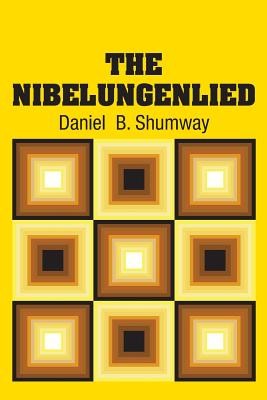
- We will send in 10–14 business days.
- Publisher: SIMON & BROWN
- Year: 2018
- Pages: 282
- ISBN-10: 1731703562
- ISBN-13: 9781731703569
- Format: 15.2 x 22.9 x 1.6 cm, softcover
- Language: English
- SAVE -10% with code: EXTRA
The Nibelungenlied (e-book) (used book) | bookbook.eu
Reviews
Description
The Nibelungenlied ("The Song of the Nibelungs") is an epic poem originally written in in Middle High German around the year 1180. It tells the story of the dragon-slayer Siegfried at the court of the Burgundians, how he was murdered, and of his wife Kriemhild's revenge. Along with the V�lsunga saga, the Nibelungenlied served as source material for Richard Wagner's famous four music dramas Der Ring des Nibelungen ("The Ring of the Nibelung"), although the storyline in the Nibelungenlied is far more extensive than in Wagner's work. Based on pre-Christian Germanic heroic motifs which include ancient oral traditions (including the Norse sagas), the Nibelungenlied first appeared from the area of the Danube between Passau and Vienna, from where the oldest manuscripts originate. The epic is divided into two parts, the first dealing with the story of Siegfried and Kriemhild, the wooing of Br�nhild and the death of Siegfried at the hands of Hagen, and Hagen's hiding of the Nibelung treasure in the Rhine (Chapters 1-19). The second part deals with Kriemhild's marriage to Etzel (Atilla the Hun), her plans for revenge, the journey of the Burgundians to the court of Etzel, and their last stand in Etzel's hall (Chapters 20-39). The original was written as a poem in 2,400 stanzas, divided up into 39 Aventiuren ("adventures"). This edition has been translated into prose format, but still accurately follows the storyline of all the Adventures. It includes a complete background introductory essay by the translator, in which the history of the surviving manuscripts and their storylines are fully explored. About the translator: Daniel Bussier Shumway (1868-1940), served as Professor of Germanic Languages and Literature at University of Pennsylvania.
EXTRA 10 % discount with code: EXTRA
The promotion ends in 17d.22:44:40
The discount code is valid when purchasing from 10 €. Discounts do not stack.
- Publisher: SIMON & BROWN
- Year: 2018
- Pages: 282
- ISBN-10: 1731703562
- ISBN-13: 9781731703569
- Format: 15.2 x 22.9 x 1.6 cm, softcover
- Language: English English
The Nibelungenlied ("The Song of the Nibelungs") is an epic poem originally written in in Middle High German around the year 1180. It tells the story of the dragon-slayer Siegfried at the court of the Burgundians, how he was murdered, and of his wife Kriemhild's revenge. Along with the V�lsunga saga, the Nibelungenlied served as source material for Richard Wagner's famous four music dramas Der Ring des Nibelungen ("The Ring of the Nibelung"), although the storyline in the Nibelungenlied is far more extensive than in Wagner's work. Based on pre-Christian Germanic heroic motifs which include ancient oral traditions (including the Norse sagas), the Nibelungenlied first appeared from the area of the Danube between Passau and Vienna, from where the oldest manuscripts originate. The epic is divided into two parts, the first dealing with the story of Siegfried and Kriemhild, the wooing of Br�nhild and the death of Siegfried at the hands of Hagen, and Hagen's hiding of the Nibelung treasure in the Rhine (Chapters 1-19). The second part deals with Kriemhild's marriage to Etzel (Atilla the Hun), her plans for revenge, the journey of the Burgundians to the court of Etzel, and their last stand in Etzel's hall (Chapters 20-39). The original was written as a poem in 2,400 stanzas, divided up into 39 Aventiuren ("adventures"). This edition has been translated into prose format, but still accurately follows the storyline of all the Adventures. It includes a complete background introductory essay by the translator, in which the history of the surviving manuscripts and their storylines are fully explored. About the translator: Daniel Bussier Shumway (1868-1940), served as Professor of Germanic Languages and Literature at University of Pennsylvania.


Reviews